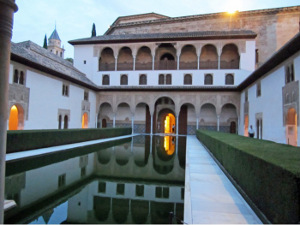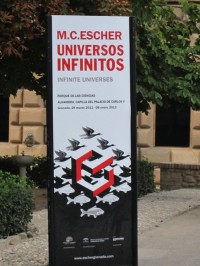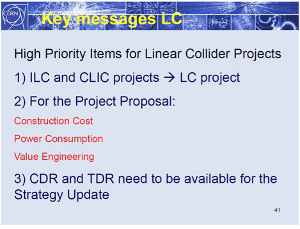
The LCWS11 workshop was held in picturesque Granada, Spain, home of the historic Alhambra, which overlooks the city
With a watchful eye on the physics that is beginning to emerge from the Large Hadron Collider at CERN, Switzerland, as well as the process for updating the European strategy for particle physics, the lepton collider community is moving incrementally towards speaking with one voice! The International Workshop for Future Linear Colliders (LCWS11) held in Granada from 26 to 30 September was large, with some 350 participants, and had parallel threads for the ILC, CLIC and the muon collider communities. As importantly, however, it had joint plenary sessions where progress was reported on the LHC, each lepton collider option, physics and detector technology and designs and plans for the future. In the coming months our community will have to formulate inputs for the update process of the European long-range strategic plan that is getting underway and will be completed in early 2013. The Granada workshop provided for extensive exchanges between the different parts of the lepton collider communities, as well as in-depth working sessions within each option.

M.C. Escher exhibit at the Alhambra on infinite universes captures the spirit of the multiple possibilities for the future of particle physics
Up on a hill overlooking the city of Granada sits the Alhambra, a reddish castle complex representing the 800-year history of Moorish presence in Spain. This world-historic site provided an imposing and inspiring backdrop for the several hundred scientists who are working and planning a new, future large-scale accelerator to follow and complement the LHC at CERN. Interestingly, the uncertain multiple options and branch points that characterise our future planning depend on science results and guidance that will come from the LHC. This uncertainty in the future path of the high-energy frontier is reminiscent of the works of M.C. Escher with their entangled circulating images. It turns out that Escher had a special affinity for the Alhambra, and at the time of the conference there was (and still is) a special Escher exhibit of his work, celebrating the 75th anniversary of his visit to the Alhambra. It is called Infinite Universes. (Note the plural!)
Perhaps the best illustration of the open-mindedness and flexibility we must maintain in planning for a future lepton collider was verbalised at the workshop by CERN Director-General Rolf Heuer during his opening plenary talk. He began by stating the obvious regarding LHC results –“finding the Higgs will be a discovery!” He then went on to state what should also be obvious, “excluding the standard model Higgs will also be a discovery!” This simple observation dramatically illustrates that the LHC experiments will find the answers we need and thereby open and point to the path for the future. Fortunately, according to Rolf, we now have the “LHC poised to clarify the mechanism by which elementary particles acquire mass.”

Rolf Heuer gives a message to the assembled linear collider community during the introductory plenary session at Granada
Finally, Rolf provided a specific message for the linear collider community: It is crucial for us to become a unified community, and the practical realities for these projects must be in hand before making project proposals. As part of the worldwide planning process, documentation (hopefully unified) will have to be prepared as input for the coming update of the European strategy.
I will close today by briefly mentioning what I think were the main accomplishments at LCWS11. For the ILC community, being a dispersed worldwide effort, this meeting brought together a large representation of our various working groups on the physics, the accelerators and the detectors. It also provided points of contact between the ILC, CLIC and muon collider proponents. Perhaps these informal interactions are the most important value of holding such joint workshops. But, more tangibly for the ILC, LCWS11 came at the time when we have made the transition from creating the baseline for the Technical Design Report to concentrating on what still needs to be decided and worked out to complete the detailed technical design, as well as costing and documenting it. We have a multitude of remaining tasks to accomplish over the coming year; nevertheless we remain on track to produce what will be a solid TDR at the end of 2012.


Recent Comments